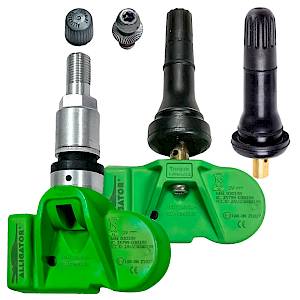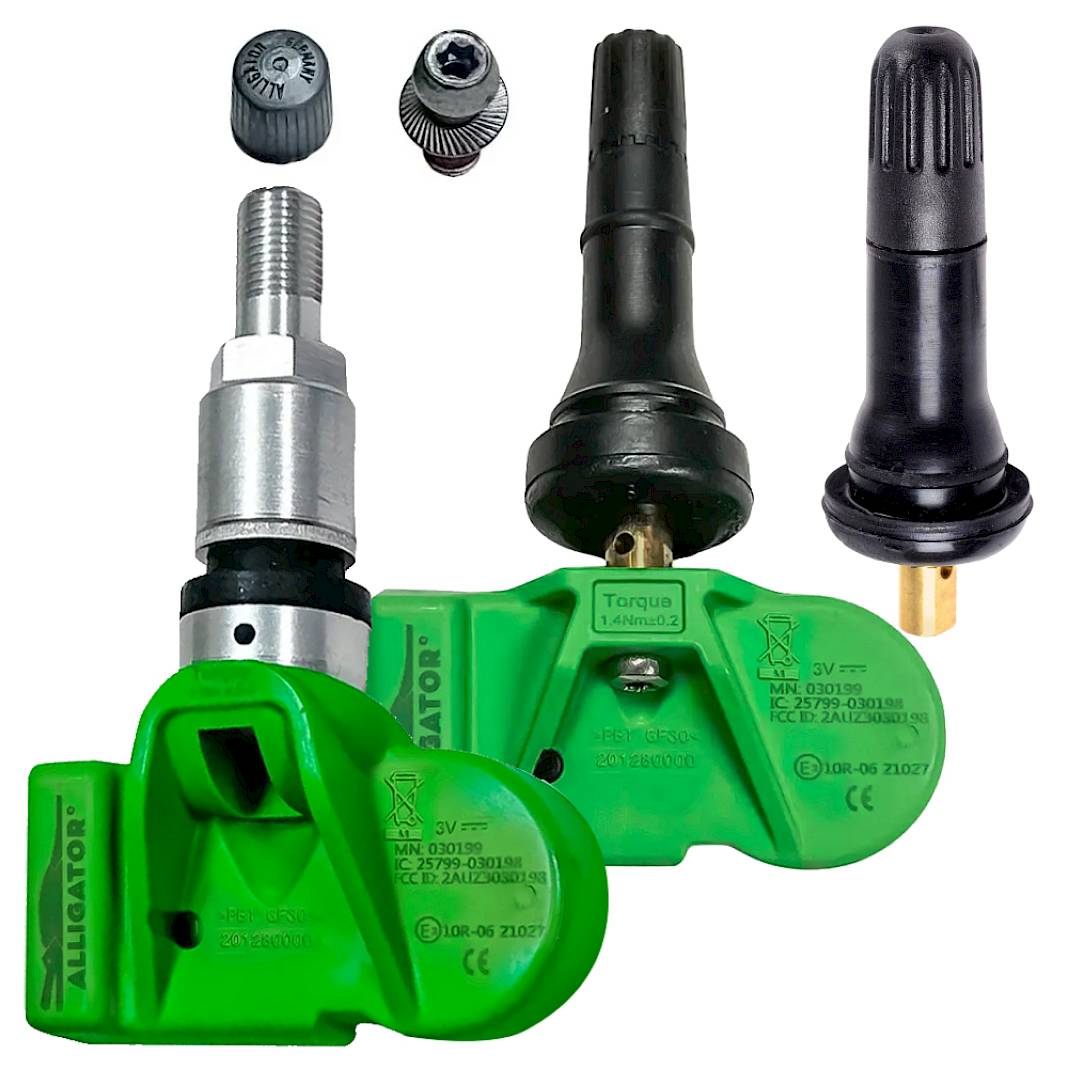
TPMS - Sensors with Valves
Dual frequency TPMS sensors monitor tire pressure in real time and work across a wide range of vehicles, thanks to their ability to operate on two key frequencies (315 MHz and 433 MHz). They improve safety, reduce inventory complexity for dealerships, and offer an easy, reliable solution for ensuring proper tire maintenance.
- Dealerships prefer our dual frequency TPMS sensors for faster installs and wider compatibility
- Programmable sensors match OE specs to prevent tire pressure issues
- Max pressure rating of 116 psi ensures reliability
- Durable OE aluminum or rubber valves for lasting solutions
- Standard 0.453” rim hole allows quick installs
- Bulk orders of 50 sensors keep your stock ready for high demand
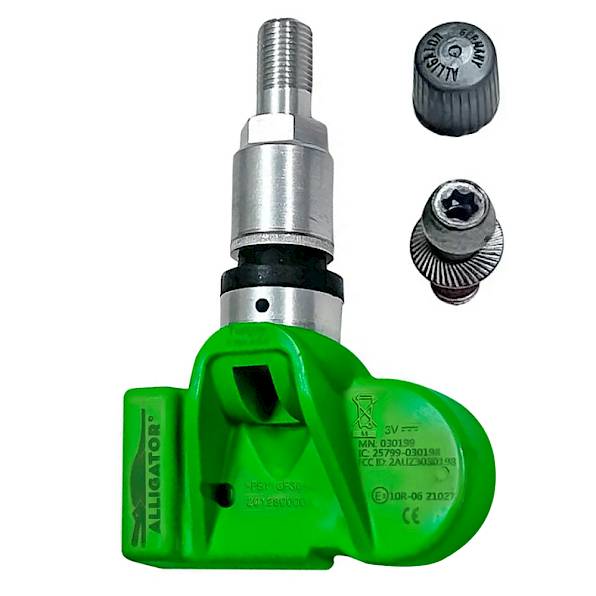
RS+ Dual Frequency TPMS Sensor with Clamp-In Silver Valve
12 min
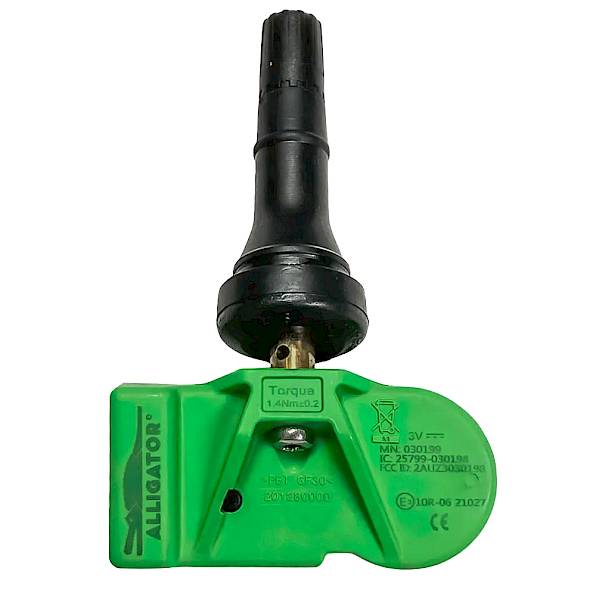
RS+ Dual Frequency TPMS Sensor with Snap-In Rubber Valve
12 min
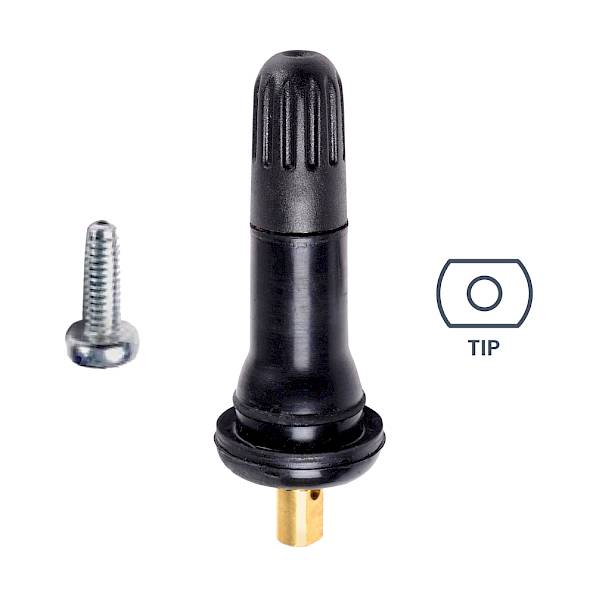
TPMS Rubber Snap-In Valve
50 min
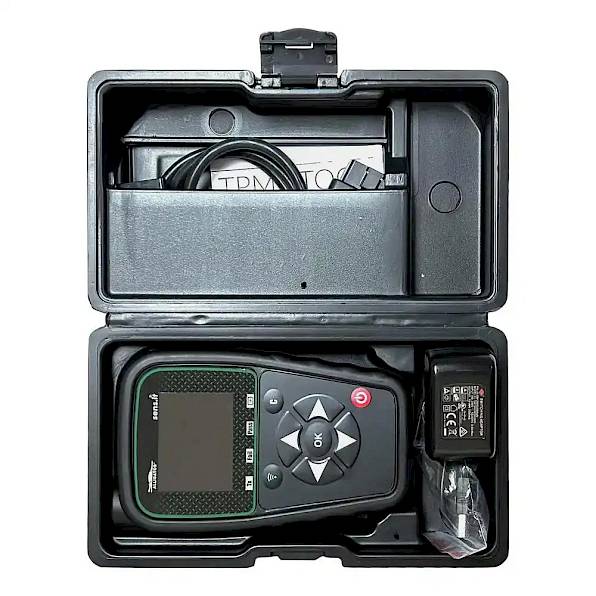
AVT41 Alligator TPMS Wireless Tool by ATEQ
TPMS - Sensors with ValvesKey Benefits for Dealerships
Wide Vehicle Compatibility
Simplified Inventory Management
Programmable and Cloneable
Durable Construction
Quick Installation
Cost-Effective Solution
Great savings with TPMS - Sensors with ValvesWe have better offers
Save big with our services! Join us and you could slash your annual expenses with this offer by up to 16,000. Discover how much you can save today and maximize your budget like never before. Let’s make your money work smarter!
Maximizing Dealership Efficiency with Dual Frequency TPMS Sensors
A competitive dealership thrives on reliable products that boost safety and streamline operations. Dual frequency TPMS sensors align with these goals by expanding tire monitoring capabilities across a wide range of vehicles.
Why Choose Dual Frequency TPMS Sensors?
Dual frequency TPMS sensors operate on 315 MHz and 433 MHz frequencies, which are commonly used by vehicle manufacturers. This makes them compatible with a broader range of vehicles, allowing dealerships to reduce the number of sensor types they stock. For dealerships, this versatility translates to simplified inventory management, quicker service, and increased customer satisfaction.
Boost Customer Satisfaction with Dual Frequency Sensors
Dual frequency TPMS sensors help keep vehicles safe by continuously monitoring tire pressure. Proper tire pressure improves fuel efficiency, enhances handling, and reduces the risk of accidents, which are benefits your customers will appreciate. By choosing versatile, durable, and easy-to-install TPMS sensors, your dealership can offer better service and boost customer satisfaction.
Ready to upgrade your inventory? Equip your dealership with dual frequency TPMS sensors today to increase service efficiency and improve vehicle performance for your customers.
